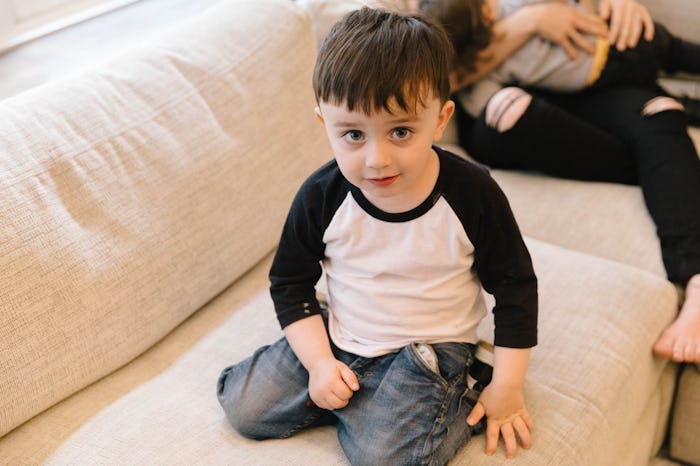Life
7 Ways Your Kid's Bones Are Different From Your Adult Bones
Remember when you were a kid and your parents would say things like, "I wish I had that kind of energy" or "that bed is killing my back"? And you would be all, "What do you mean, I feel fantastic and everything about life is amazing?" Yeah, now that you are standing in the parental shoes, it's a tad easier to see where some of those aches, pains, and common complaints were coming from, right? That's because there are a lot of ways your kid's bones are different from adults, just like their energy is seemingly endless and they have no problem bouncing back from a sleepless night.
According to Medscape, the late Mercer Rang — a prominent pediatric surgeon — pointed out, "Children are not young adults." That applies to many factors of childhood development, including the skeletal anatomy and physiology. "Differences in bone growth and modeling, as well as remodeling, affect the way in which conditions involving the skeleton should be viewed and managed," Medscape noted.
Whether you are worried about keeping your kiddo's bones healthy or you have a daredevil on your hand and are hoping their countless falls don't affect them down the road, this guide will help you understand more about how your kid's bones differ from yours.
1They Have More Bones Than You
Humans are born with nearly 300 bones, but most adults have around 206, according to The Bulletin. They don't just disappear, but instead fuse together as your little one grows, resulting in the lower final count.
2They Have More Cartilage Than Bone
The reason for the higher "bone" count, noted BBC, is that the skeleton of a newborn baby is made up of more cartilage than actual bone. Over time, ossification occurs, causing the greater bone-to-cartilage ratio.
3They Break Bones Differently
According to HealthyChildren.org, most kids who break bones suffer “greenstick” fractures, "in which the bone bends like green wood and breaks only on one side." They might also experience a “torus” where "the bone is buckled, twisted, and weakened but not completely broken," the site noted.
4They Are More Susceptible To A Certain Kind Of Fracture
But because your kid's bones are still growing, they are also susceptible to one specific fracture that involves damage to their growth plates at the ends of the bones, which are vital in determining successful bone growth down the line, according to HealthyChildren.org. "If this part of the bone does not heal properly after the fracture, the bone may grow at an angle or more slowly than the other bones in the body," the website noted.
5They Don't Need Milk To Keep Bones Strong
Milk might do a body good, but that doesn't mean it's the only thing that does. Whether your kid hates milk or you run a dairy-free household, then you might be on the lookout for other sources of calcium. Turns out that — just like you — kids don't need milk to earn the benefits of calcium. For example, 2 percent milk packs 297 milligrams of calcium, but a half cup of firm tofu has 204 and calcium-fortified orange juice has 200 to 260. If your kid will go for sardines, then they win: They boast 324 milligrams, according to The National Institutes of Health (NIH).
6They've Gotta Move Those Bones
Just like your muscles, bones get stronger when you move them — and that goes for kids and adults. NIH noted that "any kind of physical exercise is great for your kids, but the best ones for their bones are weight-bearing activities like walking, running, hiking, dancing, tennis, basketball, gymnastics, and soccer." Swimming and bicycling are great for promoting overall health, but are not weight-bearing exercises and will not help build bone density, according to NIH.
Check out Romper's new video series, Bearing The Motherload, where disagreeing parents from different sides of an issue sit down with a mediator and talk about how to support (and not judge) each other’s parenting perspectives. New episodes air Mondays on Facebook.
